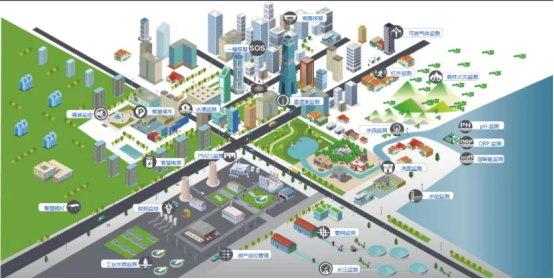






Release time:2024-09-27 Browsed0 order
LoRa technology is very practical in agriculture, industry and medicine. In agriculture, LoRa technology can be used in agricultural IoT
systems to realize functions such as farmland monitoring, irrigation control, and weather monitoring, helping farmers improve crop
yields and quality. In the industrial field, LoRa technology can be used for equipment monitoring, remote control, logistics tracking and
other applications to improve production efficiency and reduce costs. In the medical field, LoRa technology can be used for remote health
monitoring, medical equipment networking, patient positioning and other aspects to improve the efficiency and quality of medical services.In
general, LoRa technology is very practical in these fields and can help improve production efficiency, reduce costs and improve service quality.
Agriculture is a necessity for life and economy, and using LoRaWAN IoT applications can achieve maximum efficiency in agriculture,
thereby reducing environmental impact, maximizing yields, and minimizing costs. From "measuring environmental conditions that affect
crop production" to "tracking livestock health indicators", LoRaWAN networks and LoRaWAN gateways are extremely important for improving
agricultural systems.
How exactly does LoRa technology improve agricultural efficiency?
Because LoRa technology has low power consumption, long-distance characteristics and wireless quality, LoRa sensors can be used to send signals
from farms to the cloud. Users can use signal data to improve operations and build a huge smart agricultural network system to improve agricultural conditions.

Based on LoRaWAN gateways and various LoRa sensing devices, the nitrogen, phosphorus, and potassium (NPK) levels in the soil can
be quickly detected and the relevant data can be transmitted to the terminal. Through data analysis, farmers can take corresponding
treatment measures to help reduce waste and maximize crop yields.
In addition, LoRa-enabled GPS trackers and biometric sensors can monitor the cow’s vital organs and location. LoRa-equipped
capsules can also be implanted in the cow’s gastrointestinal tract to monitor various health indicators and health conditions. Once
there is any unusual activity or accident in the cow, farmers can obtain the animal’s performance status in a timely manner.
2. Accelerate urban development and create quality life
For urban infrastructure applications, the application of LoRaWAN gateways is also very extensive. LoRa technology can make
connected lighting, waste removal, vehicle services, etc. in daily life smarter. For example, with smart bus schedules, commuters
can use LoRa-based solar displays to display information such as the next bus departure time and the latest schedule changes.
This saves a lot of time for commuters.

Smart Street Lights, LoRa-based street lighting systems can minimize electricity costs without affecting the city’s infrastructure
and facilities. The fact that LoRa technology targets low cost and low power consumption makes this application effectively possible.
Smart Parking, LoRa Technology makes deployment easier to park, and users can share parking status with any LoRa-enabled device.
This can transform basic commercial and municipal parking spaces into smart spaces that can detect the absence, presence, arrival
and departure of vehicles.LoRa technology can also be used in various urban applications such as smart metering, smart water leak
detection and smart flood sensors.In addition to the above scenarios, LoRa technology can also be used in smart homes, building
equipment, home security, smart industry, smart metering, supply chain and logistics, etc.
In addition, due to the long-range, low-power characteristics and powerful geolocation capabilities of LoRa technology, vehicles,
cargo, trucks and other assets can be easily monitored over large geographic areas and in harsh environmental conditions, making
it easier for smart supply chains and logistics to transport high-value assets.